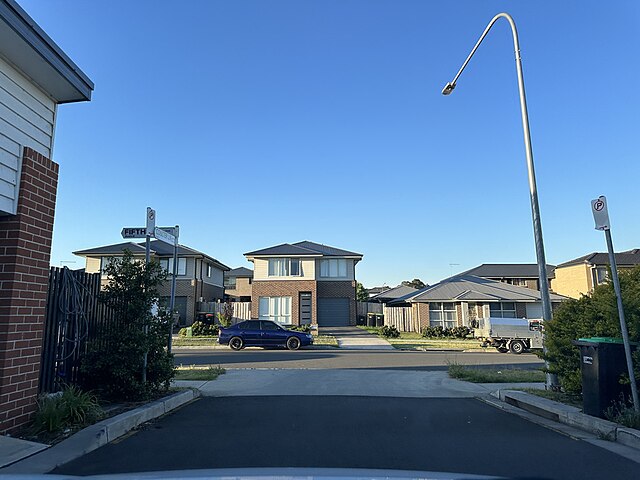By Hal Pawson
‘[T]he emergence of a domestic market for housing provided by institutional investors … would add to, and improve the quality and diversity of, Australia’s stock of … rental housing’. Backing the case for expanded Build-to-Rent (BTR) housing provision, this was the central conclusion of the first major report from the Commonwealth’s expert advisory body, the National Housing Supply and Affordability Council, back in September 2023.
While Government responses to the Council’s wide-ranging recommendations remain outstanding, Treasury has recently published detailed tax reform proposals that address part of the agenda. These advocate equalising the (overseas investor) Withholding Tax treatment of BTR housing with that for other asset classes, like office blocks and shopping centres. They also propose to bring the depreciation treatment of BTR developments into line with that for serviced apartments.
BTR potential to fulfil housing policy objectives
In my personal view, these are broadly reasonable proposals that could helpfully accelerate the expansion of a housing typology with the potential to fulfil several important housing policy objectives as argued in the Council’s 2023 report:
- Possible net addition to housing supply – conventional wisdom says will moderate both house prices and rents over time
- When rental income (not capital gain) is prime landlord motivation, the product is inherently more secure tenure from tenant perspective
- Multi-unit buildings commissioned for retention in single ownership should incentivise utility, durability and energy efficiency in design and construction
- Professional and customer-oriented management promised by BTR is potentially beneficial for BTR tenants and perhaps beyond – as ‘positive disrupter’ for private rental housing more broadly.
- As a new component of the rental market, BTR provision potentially broadens rental housing choice – albeit choice restricted to moderate to high income households
- Given investor intentions for a long term hold, BTR construction demand promises to moderate housebuilding industry volatility in response to short-lived market downturns.
Inclusion of affordable housing within market BTR developments
The proposal that BTR project eligibility for the new tax arrangements will depend on the inclusion of affordable housing units is also a laudable bid to satisfy another policy objective. The specified nature of the proposed affordable housing to be provided is, though, somewhat modest. It will be targeted to relatively high income households, and its affordable status will expire after 15 years. Even within this limited period, therefore, the measures will make little or no contribution to easing unmet housing need experienced by low income Australians.
Even so, there are questions on whether a BTR project’s associated loss of future revenue (through affordable housing regime compliance) may negate the advantage to a scheme proponent conferred by the tax changes as proposed. In our response to the government consultation on the proposals, we call for the publication of the underlying Treasury modelling to allay such concerns.
If there are well-grounded fears that the net viability impact of the proposed changes may be negligible – or even negative – there could be a case for legislating the introduction of the currently envisaged affordable housing requirement for activation at a future date – e.g. applicable to schemes starting on site five years after the tax change. One argument for this approach would be to support the objective of embedding BTR industry growth during the second half of the 2020s, particularly in support of the National Housing Accord 1.2 million homes new supply target.
But assuming that the net viability impact of the proposed reform package is in fact positive, the package deserves support as it stands. Beyond that, the legislation should also stipulate an independent review after five years to consider scope for strengthening the affordable housing requirement at that stage. This factors in the expectation that, as it becomes established, the sector will begin to overcome the disadvantages of ‘novelty’ which currently continue to dampen investor interest.
The illogicality of piecemeal housing reform
More broadly, though, it seems illogical that a policy seeking to generate (sub-market) affordable housing provision in the course of market housing development is restricted to only a very small niche within overall residential development industry output. It would apply to neither domestically-funded BTR projects, nor – more importantly – to build to sell projects. This seems particularly incongruous when the targeted niche is an industry sector already operating at a competitive disadvantage to other forms of residential development due to other property tax settings not slated for reform (negative gearing, Capital Gains Tax discount, GST).
In attempting to secure a small contribution of sub-market affordable rental housing as a routine spin-off from new market housing development, a more logical approach would be to:
- Expand the scope of such a policy to all new BTS as well as BTR housebuilding projects above a given threshold size – other than in areas with low land value
- Implement the policy via the landuse planning system rather than via the Federal tax system, through arrangements where development approval is conditional on pledged affordable housing contributions (sometimes termed ‘mandatory inclusionary zoning’).
All of this highlights the unsatisfactory nature of progressing housing reform in an unco-ordinated piecemeal manner, an approach certain to further add to regulatory complexity and cost. As already evident at the time of the 2010 Henry Tax Review, and as also exemplified in our Treasury submission, Australia’s existing residential property taxation regime is riddled with illogicalities and inconsistencies. These call for a root and branch review to inform a comprehensive housing reform strategy.








